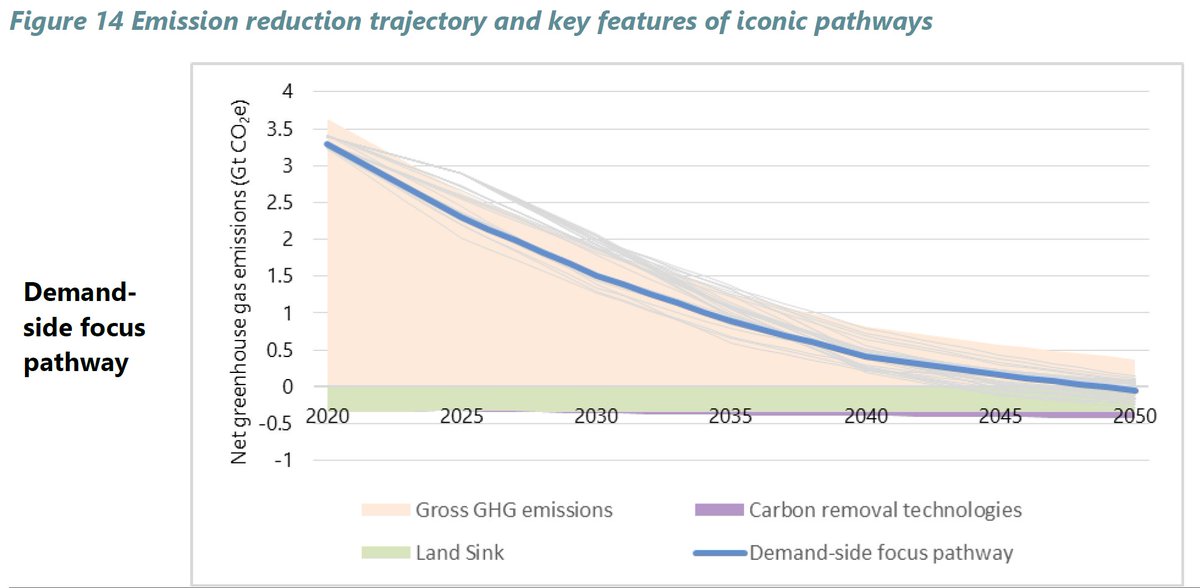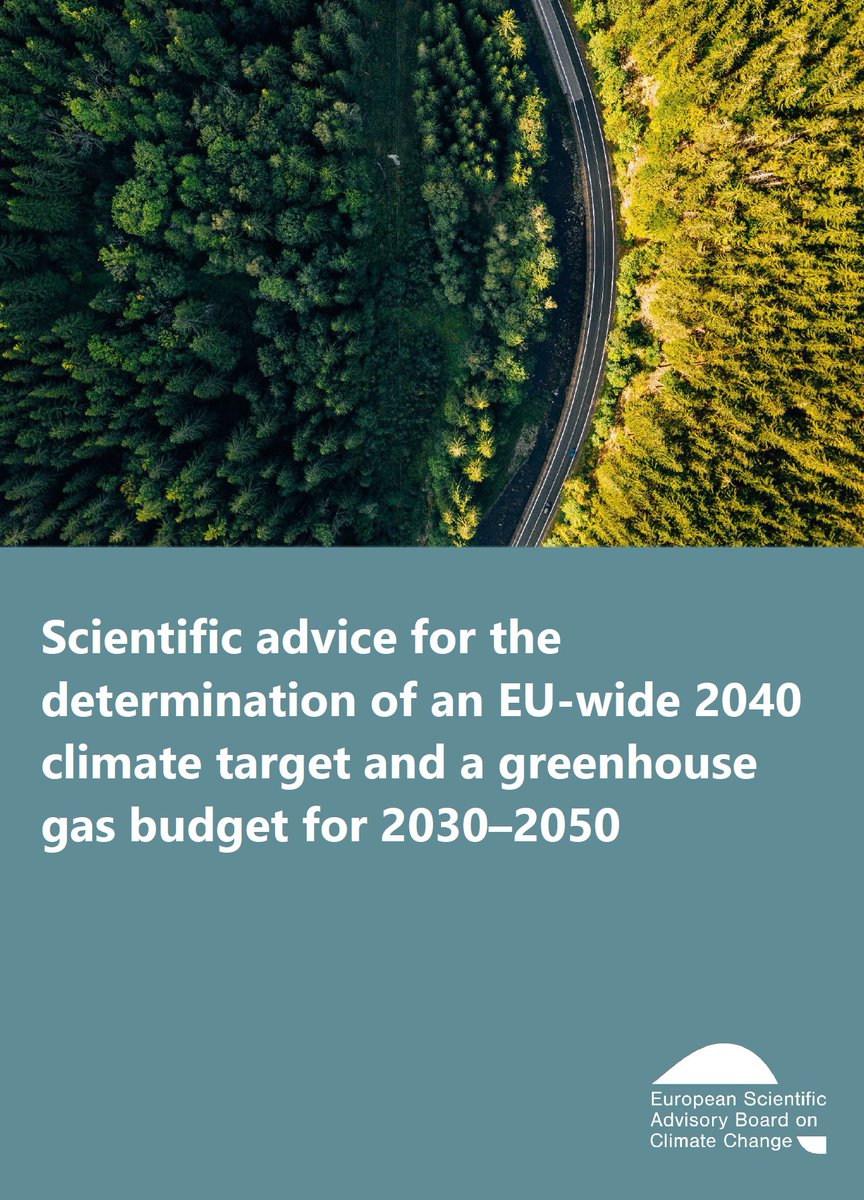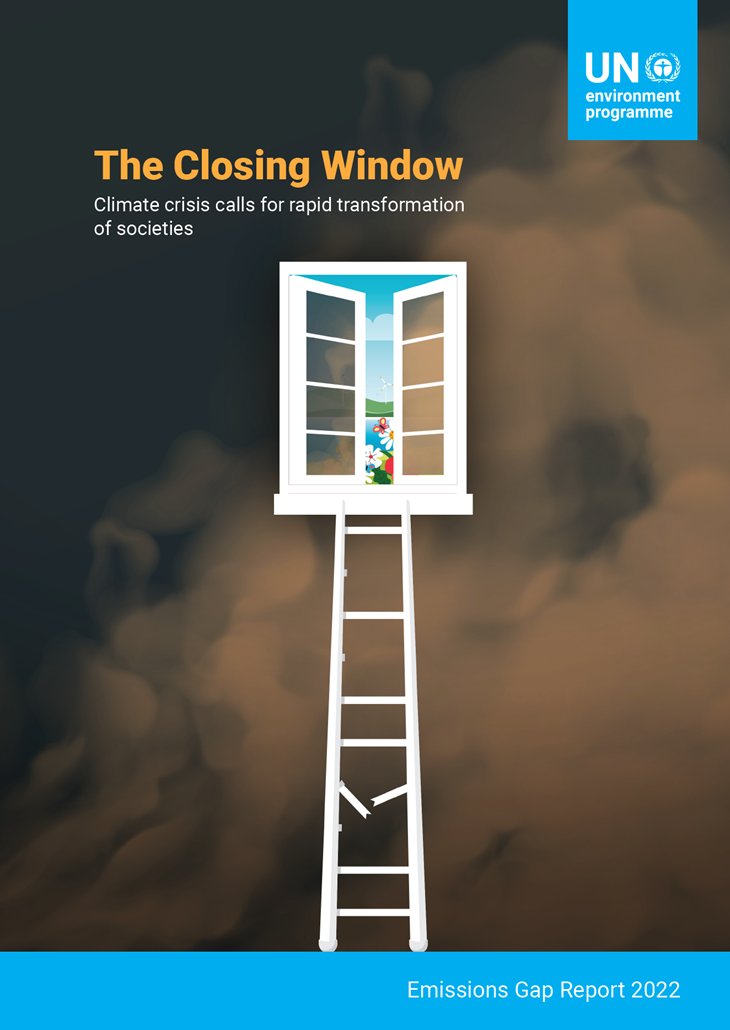Today, the @esabcc_eu published its advice for the @EU_Commission's #2040ClimateTarget proposal and accompanying #GreenhouseGasEmissionsBudget
Interested in how the advice was developed?
Here’s a slightly longer explainer of the underlying report
🧵
climate-advisory-board.europa.eu/reports-and-pu…
1/n
Interested in how the advice was developed?
Here’s a slightly longer explainer of the underlying report
🧵
climate-advisory-board.europa.eu/reports-and-pu…
1/n
The Advisory Board recommends the EU to take up a 2040 emissions reduction target of 90–95% compared to 1990 to keep the EU’s GHG budget to within 11 to 14 Gt CO2e between 2030 and 2050. #2040ClimateTarget #GreenhouseGasEmissionsBudget
Where do these numbers come from?
2/n
Where do these numbers come from?
2/n
To arrive at this #2040ClimateTarget advice, the @esabcc_eu implemented its earlier recommendation to the @EU_Commission to follow an approach that is systematic, transparent and guided by EU values, when preparing its EU 2040 climate target proposal. 4/n
The initial advice on the #2040ClimateTarget was published earlier this year in January 2023. 5/n
climate-advisory-board.europa.eu/reports-and-pu…
climate-advisory-board.europa.eu/reports-and-pu…
The most recent #2040ClimateTarget advice is based on two central considerations:
1) estimates of what the EU’s fair contribution to a global 1.5°C pathway would be, and
2) considerations of the feasibility of deep GHG emission reductions by 2040.
We look at both in turn 6/n
1) estimates of what the EU’s fair contribution to a global 1.5°C pathway would be, and
2) considerations of the feasibility of deep GHG emission reductions by 2040.
We look at both in turn 6/n
The advice quantifies different perspectives on the EU’s fair share of emissions, but bases these quantifications on ethical principles that the EU has expressed and emphasized in its laws and commitments.
These include the EU’s commitment to pursue keeping warming to 1.5C 7/n
These include the EU’s commitment to pursue keeping warming to 1.5C 7/n

as well as principles explicitly cited in the 2021 European Climate Law.
For example, the ‘polluter pays’ principle. 9/n
For example, the ‘polluter pays’ principle. 9/n

The implications of these principles are then quantified.
Choices of how to capture these ethical principles with specific indicators result in a range of estimates consistent with the initial ethical principles expressed by the EU. 10/n
Choices of how to capture these ethical principles with specific indicators result in a range of estimates consistent with the initial ethical principles expressed by the EU. 10/n

At the same time, socioeconomic and technological pathways for the EU are assessed to understand how deeply emissions can be reduced by 2040. 11/n
Here, the @esabcc_eu issued a call for evidence to the wider scientific community.
This call resulted in the submission of over 1000 scenarios by the community 12/n
climate-advisory-board.europa.eu/news/call-for-…
This call resulted in the submission of over 1000 scenarios by the community 12/n
climate-advisory-board.europa.eu/news/call-for-…
These scenarios were subsequently assessed on:
- Whether they represent the EU and its targets to a useful degree
- Whether they imply key feasibility concerns identified in the scientific literature
- The environmental risks and technological challenges they would imply 13/n
- Whether they represent the EU and its targets to a useful degree
- Whether they imply key feasibility concerns identified in the scientific literature
- The environmental risks and technological challenges they would imply 13/n

The insights of the feasibility and fair share perspectives were then combined to arrive at the recommendation to take up a #2040ClimateTarget of 90–95% compared to 1990 to keep the EU’s GHG budget to within 11 to 14 Gt CO2e between 2030 and 2050. 14/n 

Note that this 2030–2050 #GreenhouseGasEmissionsBudget includes emissions from international aviation and maritime transport between EU destinations. 15/n 

The advice also highlights three ‘iconic pathways’ that illustrate different choices and strategies to achieve climate neutrality in 2050. 16/n 

Selected for the diverse mitigation strategies they implement, the iconic pathways have very diverse assumptions and rely in different degrees on specific mitigation measures. 17/n 

These represent fundamental choices to be considered during the implementation of a 90–95% reduction by 2040. 18/n 





The @esabcc_eu advice acknowledges that there is a shortfall between what the EU can achieve domestically and the GHG budget derived from a fair share analysis based on the ethical principles expressed in EU or international law. 19/n 

To minimize this shortfall, the advice recommends aiming for the more ambitious end of the 90–95% range, while combining this with action outside the EU. 20/n 

It even provides a few more specific suggestions for dealing with the shortfall in the underlying report. 21/n 



The advice relies on several, more detailed considerations and I can’t discuss everything here. The full report is best place to explore if you’re interested in understanding all details. 22/n
climate-advisory-board.europa.eu/reports-and-pu…
climate-advisory-board.europa.eu/reports-and-pu…
The drafting of this advice was an engaging, stimulating and careful process with invaluable contributions of all @esabcc_eu members and incredible support by the Advisory Board's secretariat. 23/n
climate-advisory-board.europa.eu/about/advisory…
climate-advisory-board.europa.eu/about/advisory…
To conclude, my personal hope for the @esabcc_eu #2040ClimateTarget advice is that it can be a constructive scientific input into the 2040 target proposal by the @EU_Commission.
It represents our best available scientific understanding of what is both needed and possible. /end
It represents our best available scientific understanding of what is both needed and possible. /end
• • •
Missing some Tweet in this thread? You can try to
force a refresh

 Read on Twitter
Read on Twitter








